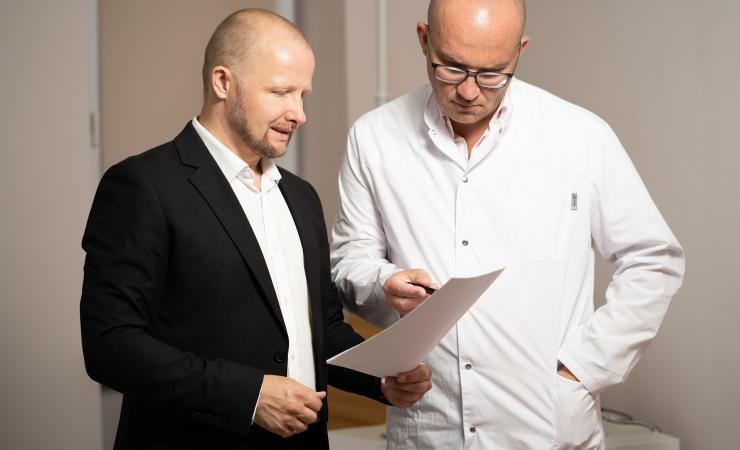It may seem a statement of the obvious, but the most important element of any medical intervention is the outcome. However, it’s not quite as clearcut as we might think; the desired outcome – and the way to get there – may differ depending on who is asked. It could be the potential for cure, or it could be the ease of administration or the quality of life while undergoing treatment. Ultimately, however, it is the opinion of patient that matters most. The IMI project ‘H2O Health outcomes observatory’ is seeking to ensure that the patient’s voice is heard loud and clear.
For a long time it was an unspoken rule in healthcare that ‘doctor knows best’, and that any treatment that was offered was the most suitable. In addition, it was seen as inappropriate to question the treatment chosen, and anyone sitting in front of their doctor also often lacked the knowledge, vocabulary and confidence to question the clinician. However, times change – often for the better - and the modern patient is now far better informed about their condition and is eloquent enough to engage with their doctor on any treatment plan.
Clearly, assisting patients in achieving their desired outcome can only be a good thing. In addition, helping to amplify their voices to make them better heard, both in the healthcare systems that serve them and in healthcare delivery overall, is also a positive development. Furthermore, it’s important to make the most of the potential that this offers. By finding ways to capture insights and data from patients on their views and experiences with treatment - as well as how outcomes meet with expectations - could prove immensely valuable in drug development, improving treatments and delivering value-based healthcare.
The Innovative Medicines Initiative (IMI) project Health Outcomes Observatory (‘H2O’) was established in 2020 in order to find ways to use technological advances to capture the potentially valuable insights on offer from data and use it to amplify those patient voices. It is also driving consensus on what to measure and define future standards. In order to do so, H2O has brought together partners from a range of sectors including healthcare, academia and SMEs, to create a robust data governance and infrastructure model for collecting and incorporating patient outcomes on a significant scale. What’s particularly important is that patients are involved from the ground up within the project and at every subsequent stage.
However, what’s equally important is that the health data remains the property of the patients and is theirs to control. The approach taken was to set up ‘health outcomes observatories’ – the H2O of the project. These are independent, not-for-profit, legal entities specifically created for data collection, analysis and evidence sharing to inform clinical practice and healthcare decisions, and are specifically designed with a governance model that ensures compliance with national and European demands. Initially, there are four observatories planned - in the Netherlands, Austria, Germany and Spain - covering three diseases: cancer, diabetes and inflammatory bowel disease (IBD). They will gather patient-generated evidence from a range of sources, including electronic health records and disease registries. Furthermore, it is the stakeholder groups who will determine which analysis should be undertaken. This information will be made available to those stakeholders – such as healthcare researchers – but only the data approved by the patient.
The approach used by the H2O project will also bring a number of additional benefits to patients. As much as possible of the data collection will be conducted automatically, and technology companies will compete to offer the best solutions. Each observatory will partner with the technology company of their choice, provided they subscribe to the governance principles and agree to join the ecosystem. In addition, any system chosen must remain open to all technology providers willing to embrace the principles of data sharing and to join the ecosystem, which is being designed as a data collective. This should create a virtuous circle, driving up the standards of data capture. For the patients, it will mean more and more of the parameters recorded will be automated, reducing the workload on them and allowing them to get on with their day-to-day lives. For the suppliers, they will have the kudos of being an accredited supplier to the observatory and share the value that is being created.
While the end date of the H2O project is September 2025, it is already proceeding at pace. This year, the project has already established the Dutch, Spanish and Austrian observatories, and the German observatory follow shortly. At the same time, the team is preparing a feasibility study for a real world test for the model before the end of 2022. New members and partners are also joining; Aarhus Hospital in Denmark is the latest to agree to collaborate with this project.
Meni Styliadou of Takeda, the industry lead for the project said: ‘The outcomes that matter most for patients are the one we should focus on. That requires that we have not only their input and their data, but also their trust. The governance structure that the observatories deliver should provide the basis for such trust.’
H2O is supported by the Innovative Medicines Initiative, a partnership between the European Union and the European pharmaceutical industry.
